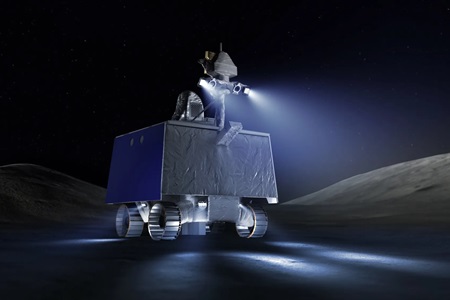
NASA has opened an opportunity for individuals worldwide to etch their names on the lunar surface by sending them aboard the agency’s first robotic lunar rover, VIPER (Volatiles Investigating Polar Exploration Rover). This initiative is part of NASA’s broader efforts to involve the public in its space exploration endeavours.
Under the “Send Your Name with VIPER” campaign, NASA is accepting name submissions until March 15, 11:59 p.m. EST. The collected names will be affixed to the VIPER rover, which is set to embark on a mission to the lunar South Pole. VIPER aims to unravel the mysteries surrounding the Moon’s water and provide crucial insights into the environment where NASA plans to land the first woman and first person of colour as part of the Artemis programme.
Participants in the campaign can also create and download a virtual souvenir – a personalised boarding pass commemorating their involvement in the VIPER mission. NASA encourages participants to share their contributions on social media using the hashtag #SendYourName.
Nicola Fox, Associate Administrator, Science Mission Directorate at NASA Headquarters in Washington, said: “With VIPER, we are going to study and explore parts of the Moon’s surface no one has ever been to before – and with this campaign, we are inviting the world to be part of that risky yet rewarding journey. Just think: Our names will ride along as VIPER navigates across the rugged terrain of the lunar South Pole and gathers valuable data that will help us better understand the history of the Moon and the environment where we plan to send Artemis astronauts.”
VIPER, managed by NASA’s Ames Research Center in California’s Silicon Valley, is considered a game-changer in lunar exploration. Scheduled for delivery to the lunar surface in late 2024 through Astrobotic Technologies’ Griffin Mission One, VIPER will undergo a 100-day mission to examine lunar ice and potential resources. The rover’s deployment is part of NASA’s Commercial Lunar Payload Services (CLPS) initiative under the Artemis programme, contributing to the agency’s long-term mission cadence for lunar exploration and eventual human missions to Mars.
Daniel Andrews, VIPER’s project manager at NASA’s Ames Research Center in California’s Silicon Valley, added: “Our VIPER is a game-changer. It’s the first mission of its kind, expanding our understanding of where lunar resources could be harvested to support a long-term human presence on the Moon.”
The VIPER mission is a crucial component of NASA’s Lunar Discovery and Exploration Programme (LDEP) and is managed by the Science Mission Directorate. NASA Ames leads the mission’s science, systems engineering, and rover operations, with hardware design and construction by NASA’s Johnson Space Center. The instruments are contributed by NASA Ames, Kennedy Space Center, and commercial partner Honeybee Robotics in Altadena, California.












Add Comment